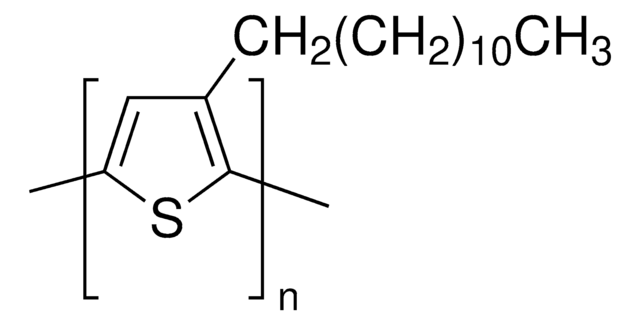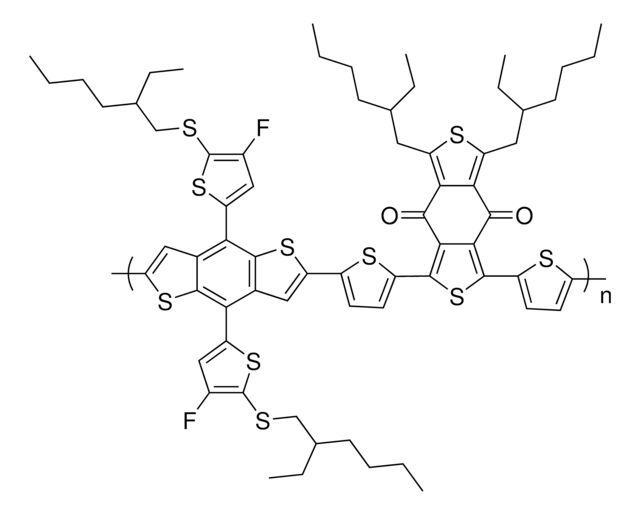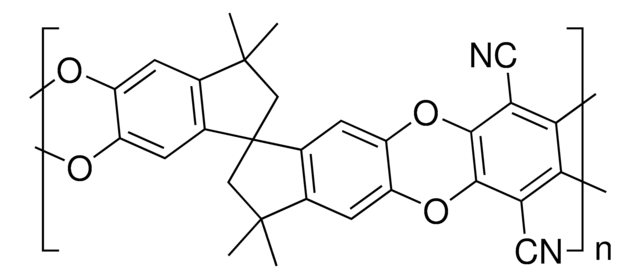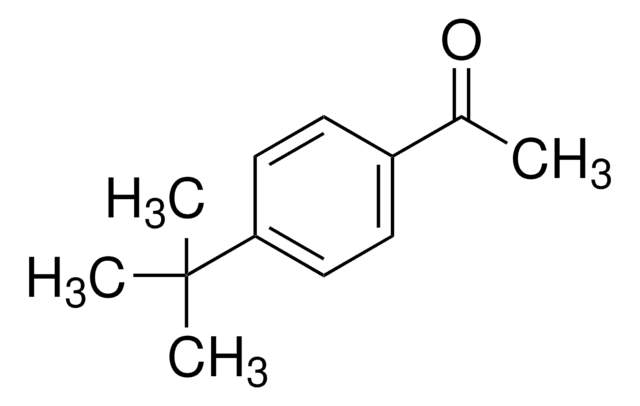745820
Difluoro{3-ethyl-5-[1-(4-ethyl-3,5-dimethyl-2H-pyrrol-2-ylidene-N)ethyl]-2,4-dimethyl-1H-pyrrolato-N}boron
98% (HPLC)
Synonyme(s) :
1,3,5,7,8-Pentamethyl-2,6-diethylpyrromethene-difluoroborate, 2,6-Diethyl-1,3,5,7,8-pentamethylpyrromethene-boron difluoride, 3-Ethyl-5-[1-(4-ethyl-3,5-dimethyl-2H-pyrrol-2-ylidene)ethyl]-2,4-dimethyl-1H-pyrrole, boron complex, Exciton Pyrromethene 567, P 567, Pyrromethene 567
About This Item
Produits recommandés
Pureté
98% (HPLC)
Forme
solid
Pf
208-213 °C
Fluorescence
λex 522 nm
Chaîne SMILES
CC(C1=C(C)C(CC)=C(C)N1B(F)2F)=C3[N]2=C(C)C(CC)=C3C
InChI
1S/C18H25BF2N2/c1-8-15-10(3)17-12(5)18-11(4)16(9-2)14(7)23(18)19(20,21)22(17)13(15)6/h8-9H2,1-7H3
Clé InChI
DZSMVBDAUBBZJD-UHFFFAOYSA-N
Description générale
Application
Used for solid-state dye laser devices.
Mention d'avertissement
Warning
Mentions de danger
Conseils de prudence
Classification des risques
Eye Irrit. 2 - Skin Irrit. 2 - STOT SE 3
Organes cibles
Respiratory system
Code de la classe de stockage
11 - Combustible Solids
Classe de danger pour l'eau (WGK)
WGK 3
Point d'éclair (°F)
Not applicable
Point d'éclair (°C)
Not applicable
Faites votre choix parmi les versions les plus récentes :
Certificats d'analyse (COA)
Désolés, nous n'avons pas de COA pour ce produit disponible en ligne pour le moment.
Si vous avez besoin d'assistance, veuillez contacter Service Clients
Déjà en possession de ce produit ?
Retrouvez la documentation relative aux produits que vous avez récemment achetés dans la Bibliothèque de documents.
Notre équipe de scientifiques dispose d'une expérience dans tous les secteurs de la recherche, notamment en sciences de la vie, science des matériaux, synthèse chimique, chromatographie, analyse et dans de nombreux autres domaines..
Contacter notre Service technique![Difluoro(4-(1,1-dimethylethyl)-2-{1-[4-(1,1-dimethylethyl)-3,5-dimethyl-2H-pyrrol-2-ylidene-N]ethyl}-3,5-dimethyl-1H-pyrrol-2-ylidene-N]ethyl}-3,5-dimethyl-1H-pyrrolato-N)boron 98% (HPLC)](/deepweb/assets/sigmaaldrich/product/structures/207/879/8046aafd-78ca-4fd8-92dc-801de0b6cc53/640/8046aafd-78ca-4fd8-92dc-801de0b6cc53.png)
![Difluoro{2-[(3,5-dimethyl-2H-pyrrol-2-ylidene-N)methyl]-3,5-dimethyl-1H-pyrrolato-N}boron 99% (HPLC)](/deepweb/assets/sigmaaldrich/product/structures/518/861/c19c64be-654e-472e-a069-30ffccb1a8cd/640/c19c64be-654e-472e-a069-30ffccb1a8cd.png)
![Difluoro{2-[1-(3,5-dimethyl-2H-pyrrol-2-ylidene-N)ethyl]-3,5-dimethyl-1H-pyrrolato-N}boron 99% (HPLC)](/deepweb/assets/sigmaaldrich/product/structures/196/394/4c2c0eae-f749-44bf-a37b-84bf0226092e/640/4c2c0eae-f749-44bf-a37b-84bf0226092e.png)







